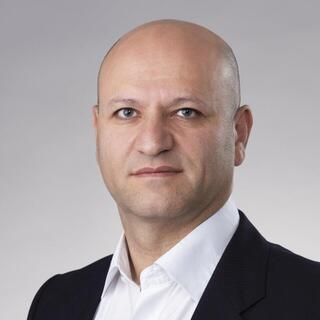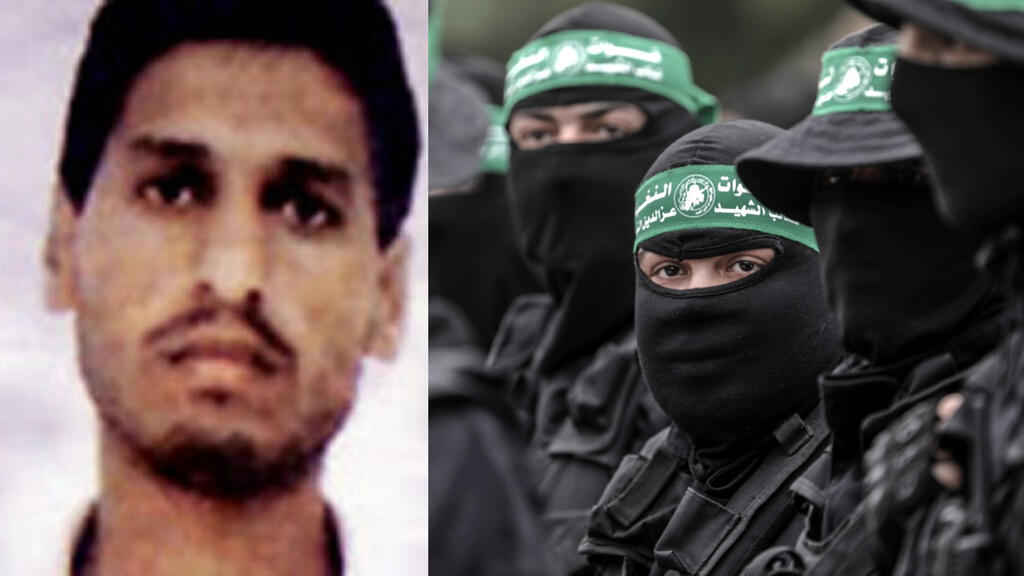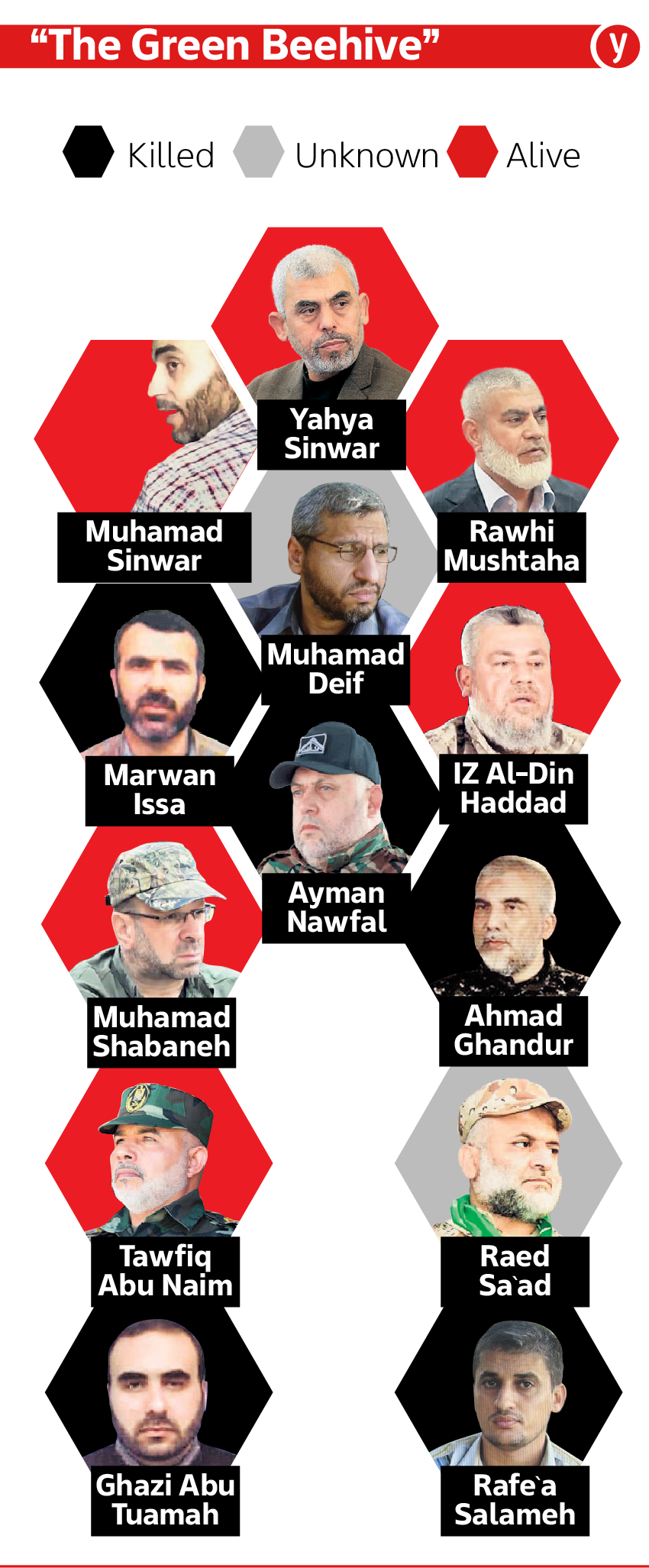Getting your Trinity Audio player ready...
There is something strange about Palestinian discourse these past few weeks: While the Israeli media is in a frenzy over whether or not Mohammed Deif, the head of the military wing of Hamas (Iz al-Din al-Qassam Brigades), was indeed assassinated, the Palestinian discussion of the matter seems relatively limited.
Possible reasons are a certain degree of confusion, acceptance of the Hamas narrative that he has, in fact, survived, and the “Chain of Shuhada (martyrs)” perception under which the Muslim warrior is in constant peril but relies on the promise that, should he get hurt, he will always be replaced by another who will continue to raise the banner of Jihad in his stead.
Deif’s fate remains shrouded in mist, and it appears as though Hamas would prefer this mystery to remain unsolved. If Deif was indeed killed, it would be Israel’s most significant feat in this ongoing war. He is, above all else, a national legend. The fact that his face has not been revealed in public, coupled with the numerous times he has survived attempted assassinations, has painted him as a ghoulish spirit that keeps Israel on its toes.
But beyond the symbolic dimension, Deif headed Hamas’ military hierarchy and has been a charismatic and authoritative leader, accumulating experience over nearly four decades. He turned Hamas from an underground terror and guerilla organization into an established entity possessing the military capabilities of a quasi-state. His recent focus was on adapting to new warfare patterns - small units replacing the battalions being dismantled by the IDF.
Assuming Deif has indeed been killed, he may be succeeded by one of three prominent candidates. The first is Yahya Sinwar’s 49-year-old brother, Mohammed (Abu Ibrahim), who was Deif’s second-in-command and a former commander of the Khan Yunis Brigade. In 2006, he was a participant in the abduction of Gilad Shalit, who was later used as a bargaining chip in the release of his brother Yahya from Israeli prison.
The second candidate is Izz al-Din Hadad (Abu Suhaib), commander of the Gaza City Brigade, who played a key role in planning the October 7 attack. The third is Ra'ed Saad (Abu Mua'dh), the head of Hamas' operations division in the armed wing; however, his candidacy is debatable as he may have been injured or killed in an assassination attempt in late June.
This discussion regarding Deif’s successor warrants some insights into the senior Hamas decision-making forum in Gaza - the “beehive” - on which Sinwar has relied to advance the war, as well as negotiate a deal. This small group is composed of the leaders of the High Military Council (the Hamas General Staff), alongside high-ranking politburo officials, all of whom have known Sinwar for many years, and adhere to the same principles – prioritizing jihad, even if it takes a high toll on the Gazan public in general, and Hamas in particular.
Two members stand out within the “beehive,” having accompanied Sinwar for almost 40 years: Rawhi Mushtaha (Abu Jamal), member of the political bureau in Gaza, who is considered a leading candidate for replacing Sinwar in the event that the latter were to come to any harm; and Tawfiq Abu Naim (Abu Abdullah), former head of the internal security force. The three of them had started out in the 1980s as members of the al-Majd apparatus charged with locating and executing suspected collaborators with Israel. They were subsequently arrested, spending a quarter of a century in Israeli prison (during which they familiarized themselves with Israeli society), before being released as part of the Shalit prisoner exchange, taking over Hamas positions of power, and shaping them to suit their ideology.
3 View gallery


Yahya Sinwar had relied on the “beehive” to advance the war, as well as negotiate a deal
(Photo: EPA)
The “beehive” is a group whose members share a similar background. Most are 50 to 60 years old, almost all of them come from refugee camps and underprivileged traditional families who express hostility toward Israel, and a yearning to return to the villages that were destroyed in 1948. “Beehive” members have their roots in Islamic student cells (al-Kutla al-Islamiyya), and have engaged in years of military activity, which is why they feel contempt for leaders who climbed up the ladder through political actions, such as Ismail Haniyeh, the head of the political bureau of Hamas. Thus, following Operation Protective Edge in 2014, Sinwar impugned Haniyeh, declaring that, when he becomes leader of the organization, war will be initiated by Hamas on enemy soil - a promise on which he has indeed delivered.
The beehive is probably the group of conspirators who have been planning the October 7 massacre for the past decade. The attack did not result from extensive discourse and organized decisions, but was instead a project pursued by a group who determined Hamas’ strategy as well as the fate of their own nation. This beehive, however, is diminishing due to the ongoing war and unprecedented Israeli strikes. Senior officials close to Sinwar have been killed, such as Marwan Issa (Abu Baraa'), the third-highest ranking official in Hamas hierarchy, four of the armed wing heads (three of whom were brigade commanders: Ahmad Ghandur, Ghazi Abu Tumaa'h and Rafa Salama), and six of the 17 members of the political bureau in Gaza Strip.
At this point, however, I must qualify. Hamas has vast experience with targeted killings, and has developed a “lizard-like nature” that enables it to recover even when it has been hit hard. For instance, after most founders of the organization, among them Shaykh Ahmad Yassin, were killed during the second Intifada in the early 2000s, or when Hamas military chief, Ahmad Ja'abari, was assassinated in the 2012 Operation Pillar of Defense. Not only did Hamas survive these harsh blows, it thrived, going on to win the 2006 elections, take over Gaza, build up its force, and carry out significant attacks against Israel, including the current war.
 Michael MilshteinPhoto: Courtesy
Michael MilshteinPhoto: CourtesyWhen killing senior members of terror organizations, one always contends with the same conundrum. On the one hand, these assassinations deliver substantial blows to Hamas as it grapples with challenges it has never encountered before. The higher-ranking the target - and certainly if it will be Yahya Sinwar - the greater the impact on Hamas’ ability to fight and govern in Gaza. On the other hand, many of the “beehive” members are alive and active; and even those who had been killed have been replaced, albeit by operatives whose experience is more restricted compared to their predecessors.
In the absence of control over the Gaza Strip, which, at present, Israel does not have the ability or desire to take, these targeted killings, while sure to hurt Hamas as they have been doing for decades, will not necessarily lead to the organization’s collapse, and certainly not to its surrender.
Dr. Michael Milshtein is the Director of the Palestinian Studies Forum in Tel Aviv University’s Moshe Dayan Center





